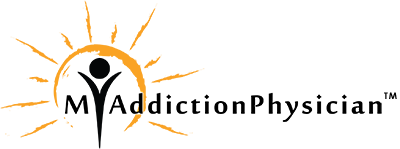5. MEDICALLY ASSISTED TREATMENT
It’s not 12-steps… it’s the first step! Regardless of what you call it — medically managed withdrawal, medically-assisted treatment, etc. — there can be no doubt that medication(s) play a critical part in a comprehensive addiction treatment plan. Outpatient rehab (aka, outpatient detox) is a safe and effective way to ease the symptoms of withdrawal (aches and pains, stomach cramps, feeling sick, muscle spasms, insomnia, feelings of coldness/chills, muscular tension, heart pounding, and yawning). Also, outpatient detox can significantly minimize “down time” and allow medically-assisted treatment to be initiated sooner. There are a number of ways (patient-family-oriented ‘pathways’, if you will) that outpatient detox can be initiated, depending upon the individual’s needs:
- Recently FDA approved lofexidine, an alpha-adrenergic agonist (Lucemyra) — it works by blocking the release of norepinephrine and is prescribed for up to 14 days. This medication is a clinical “cousin” to clonidine hydrochloride, but has less hypotension and sedation side effects to its “cousin.”
- A 7-day “detox box” combination for opiate withdrawal — this includes traditional comfort and sleep medications, and a pressor to prevent low blood pressure; and titrating upwards low-dose oral naltrexone. Detoxification occurs off prescription, but requires careful supervision by family members or significant other, and the ability to follow a 6-day prescription plan to get to naltrexone-extended release injection in 7-10 days.
- In desperate clinical situations, where time is of the essence, naltrexone-extended release injection therapy can be instituted after patient pre-medicated and post-injection withdrawal management occurs. An initial 24-48 hours of heavier sedation is followed by a return to full function as medications are being phased out (approximately 5 days).
- Another option is buprenorphine/naloxone induction, which takes approximately 30-48 hours, utilizing the clinical opiate withdrawal scale for induction of sublingual therapy with this medication.
Dr. Avart will carefully describe the available options and his recommendations upon evaluation. In general, our rehabilitation/recovery model at My Addiction Physician looks at medically assisted treatment as the “glue” that holds it all together. Patients also learn key physiologic recovery skills that promote independence starting immediately. After all, a better educated, well-informed patient speeds and improves the success rate for medication reduction and/or elimination. It also improves long-term success.
